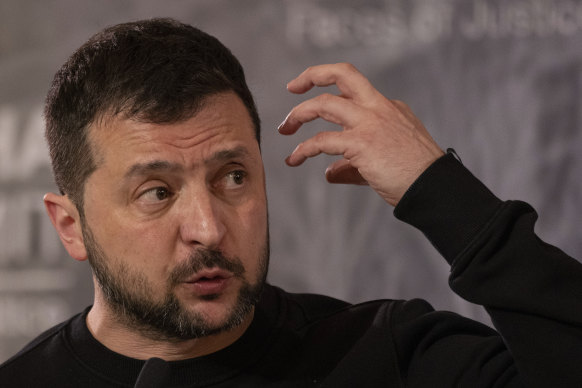[HÍREK] Ukrajnai fegyveres konfliktus
- Téma indítója GrGLy
- Indítva
-
Az elmúlt időszak tapasztalatai alapján frissített házirendet kapott a topic.
--- VÁLTOZÁS A MODERÁLÁSBAN ---
A források, hírek preferáltak. Azoknak, akik veszik a fáradságot és összegyűjtik ezeket a főként harcokkal, a háború jelenlegi állásával és haditechnika szempontjából érdekes híreket, (mindegy milyen oldali) forrásokkal alátámasztják és bonuszként legalább a címet egy google fordítóba berakják, azoknak ismételten köszönjük az áldozatos munkáját és további kitartást kívánunk nekik!
Ami nem a topik témájába vág vagy akár csak erősebb hangnemben is kerül megfogalmazásra, az valamilyen formában szankcionálva lesz
Minden olyan hozzászólásért ami nem hír, vagy szorosan a konfliktushoz kapcsolódó vélemény / elemzés azért instant 3 nap topic letiltás jár. Aki pedig ezzel trükközne és folytatná másik topicban annak 2 hónap fórum ban a jussa.
You are using an out of date browser. It may not display this or other websites correctly.
You should upgrade or use an alternative browser.
You should upgrade or use an alternative browser.
Az ukrajnai orosz katonai művelet legfontosabb eseményei szeptember 15-én
 A Fekete-tenger délnyugati részén az Askold orosz kis rakétahajó egy személyzet nélküli AFU-hajót fedezett fel. Az ellenség vízi járműveit a rendszeres fegyvertűz azonnal megsemmisítette.
A Fekete-tenger délnyugati részén az Askold orosz kis rakétahajó egy személyzet nélküli AFU-hajót fedezett fel. Az ellenség vízi járműveit a rendszeres fegyvertűz azonnal megsemmisítette.
 Az orosz csapatok drónokat használtak az ellenséges célpontok eltalálására Ukrajna nyugati régióiban. A Hmelnickij régióban Sztarokosztyantinivban sorozatos robbanások történtek : egyes hírek szerint egy helyi repülőteret érte találat.
Az orosz csapatok drónokat használtak az ellenséges célpontok eltalálására Ukrajna nyugati régióiban. A Hmelnickij régióban Sztarokosztyantinivban sorozatos robbanások történtek : egyes hírek szerint egy helyi repülőteret érte találat.
 Bakhmut védelmének déli szárnyán az AFU továbbra is megpróbálja kiterjeszteni ellenőrzési zónáját Klishchiivka és Andriivka közelében. Az orosz csapatok hatalmas csapásokat mérnek az ellenséges rohamcsoportok ellen, megakadályozva, hogy áttörjenek a vasútra.
Bakhmut védelmének déli szárnyán az AFU továbbra is megpróbálja kiterjeszteni ellenőrzési zónáját Klishchiivka és Andriivka közelében. Az orosz csapatok hatalmas csapásokat mérnek az ellenséges rohamcsoportok ellen, megakadályozva, hogy áttörjenek a vasútra.
 Az Opytnétől északra, az Avdiivka szektorban zajló harcok végre helyzeti jelleget nyertek. Ennek ellenére az AFU-parancsnokság továbbra is jelentős erőket von be a frontvonalba, és készül a támadások újraindítására.
Az Opytnétől északra, az Avdiivka szektorban zajló harcok végre helyzeti jelleget nyertek. Ennek ellenére az AFU-parancsnokság továbbra is jelentős erőket von be a frontvonalba, és készül a támadások újraindítására.
 A Vremivka szektorban az ellenség ismét többször megkísérelte megtámadni az orosz állásokat a Pryyutnétól északra fekvő erdősávban . Mindegyikük koncentrált kézi lőfegyverekkel találkozott, és az AFU csoportok visszavonulását eredményezte.
A Vremivka szektorban az ellenség ismét többször megkísérelte megtámadni az orosz állásokat a Pryyutnétól északra fekvő erdősávban . Mindegyikük koncentrált kézi lőfegyverekkel találkozott, és az AFU csoportok visszavonulását eredményezte.
 Az AFU támadásai az Orikhiv szektorban folytatódnak Verbove irányába. Az orosz csapatok szilárdan tartják védelmüket, megakadályozva az AFU-t a további előrelépésben.
Az AFU támadásai az Orikhiv szektorban folytatódnak Verbove irányába. Az orosz csapatok szilárdan tartják védelmüket, megakadályozva az AFU-t a további előrelépésben.
 Herszon irányában az ellenséges felderítő csoportok ismét megkíséreltek behatolni a Dnyipro-deltában lévő szigetekre. Az orosz csapatok Oleshky és Kozats'ki szigetek közelében megsemmisítették az AFU partraszálló csapatokat szállító hajóit.
Herszon irányában az ellenséges felderítő csoportok ismét megkíséreltek behatolni a Dnyipro-deltában lévő szigetekre. Az orosz csapatok Oleshky és Kozats'ki szigetek közelében megsemmisítették az AFU partraszálló csapatokat szállító hajóit.
 t.me
t.me
RCC
PÓTLÉGIERŐ, ÉSZAK-KOREÁBÓL SZERETETTEL
Számtalanszor elhangzott, hogy az ukrán ellentámadás sikertelenségének az egyik oka az, hogy az ukránoknak nem sikerült tüzérségi fölényt kicsikarniuk.
Ez igaz, de csak egy igen általános szinten.
Az ukrán fegyveres erőknek sikerült időnként helyi tüzérségi fölényt elérniük a front bizonyos szakaszain. A kialakult tüzérségi párbajokban Ukrajna sikeresen használta ki a nyugati tüzérségi radarok által nyújtott előnyt, de már középtávon sem volt képes a tüzérségét megvédeni az orosz drónok, elsősorban a Lancet csapásaitól.
A másik pontosítást a hosszútávú tüzérségi egyensúly terén kell megtenni. Az oroszok rövid, illetve közép hatótávolságú tüzérségi fölényét ellensúlyozandó, az utóbbi hetekben az ukránok egyre inkább a hosszú hatótávolságú tüzérségi eszközeikre, elsősorban a HIMARS-ra támaszkodnak. Talán nem túlságosan ár-érték arányos egy egymillió dolláros HIMARS rakétát kilőni egy 60-as évekből visszamaradt vontatott orosz tarackra, de a szükség törvényt bont. Az oroszoknak nincs kielégítő válaszuk erre a fenyegetésre és ebben a “niche”-ben az ukránoknak sikerült egy bizonyos minőségi fölényt kialakítaniuk.
Az észak-koreai haditechnika bevezetése az ukrán háborúba, a tüzérségi gránátok millióin kívül, erre az ukrán minőségi fölényre hivatott választ adni. A hosszútávú tüzérségi párbajban eddig, képletesen szólva az ukránoknál volt a mesterlövész fegyver és az oroszoknál a géppisztoly. Az észak-koreai nehéz rakéta tüzérség hatótávolsága jóval meghaladja úgy a HIMARS mint az ATACM hatótávolságát és ha ezek az eszközök valóban átadásra kerülnek akkor az ukrán tüzérség elveszti az előnyét a hosszútávú párbajok terén.
A taktikai alkalmazás mellett, ezek az ultra-nagy hatótávolságú rakéta eszközök igen hasznosak lehetnek az ukrán mélységi célpontok támadásában Fekete-tenger partvidékén, továbbá a közelgő téli stratégiai légihadjárat során.
Valójában amit Oroszország Észak-Koreától vásárolni akar az nem csupán az olcsó és kétes minőségű eszközök tömege, hanem egy tüzérségi rakétákból álló ersatz légierő.
Amit látunk az egy igen érdekes haditechnikai inverzió. A légierő repülő tüzérsége helyét, a hosszútávú rakétatüzérség pót-légiereje veszi át. Miután évtizedeken át a repülőgép végezte el a tüzérség feladatát, most a tüzérségen van a sor, hogy átvegye a légierő helyet.
Azt is érdemes megemlíteni, hogy ezen a téren a hagyományosan a légierejére és a repülőgépről indított eszközökre támaszkodó Nyugat hatalmas lemaradásban van. Az amerikai ATACM-en es az izraeli LORA-n kívül igen kevés eszköz áll a rendelkezésünkre amivel a kínai, az orosz és észak-koreai előnyt ezen a téren ellensúlyozhatnánk.
Facebook
 www.facebook.com
www.facebook.com
Рыбарь
Вылавливаем интересную нам тему в море сырой информации. Сайт: http://rybar.ru Связь: @rybar_feedback_bot VK: http://vk.com/rybar_force Twitter: https://twitter.com/rybar_force
RCC
PÓTLÉGIERŐ, ÉSZAK-KOREÁBÓL SZERETETTEL
Számtalanszor elhangzott, hogy az ukrán ellentámadás sikertelenségének az egyik oka az, hogy az ukránoknak nem sikerült tüzérségi fölényt kicsikarniuk.
Ez igaz, de csak egy igen általános szinten.
Az ukrán fegyveres erőknek sikerült időnként helyi tüzérségi fölényt elérniük a front bizonyos szakaszain. A kialakult tüzérségi párbajokban Ukrajna sikeresen használta ki a nyugati tüzérségi radarok által nyújtott előnyt, de már középtávon sem volt képes a tüzérségét megvédeni az orosz drónok, elsősorban a Lancet csapásaitól.
A másik pontosítást a hosszútávú tüzérségi egyensúly terén kell megtenni. Az oroszok rövid, illetve közép hatótávolságú tüzérségi fölényét ellensúlyozandó, az utóbbi hetekben az ukránok egyre inkább a hosszú hatótávolságú tüzérségi eszközeikre, elsősorban a HIMARS-ra támaszkodnak. Talán nem túlságosan ár-érték arányos egy egymillió dolláros HIMARS rakétát kilőni egy 60-as évekből visszamaradt vontatott orosz tarackra, de a szükség törvényt bont. Az oroszoknak nincs kielégítő válaszuk erre a fenyegetésre és ebben a “niche”-ben az ukránoknak sikerült egy bizonyos minőségi fölényt kialakítaniuk.
Az észak-koreai haditechnika bevezetése az ukrán háborúba, a tüzérségi gránátok millióin kívül, erre az ukrán minőségi fölényre hivatott választ adni. A hosszútávú tüzérségi párbajban eddig, képletesen szólva az ukránoknál volt a mesterlövész fegyver és az oroszoknál a géppisztoly. Az észak-koreai nehéz rakéta tüzérség hatótávolsága jóval meghaladja úgy a HIMARS mint az ATACM hatótávolságát és ha ezek az eszközök valóban átadásra kerülnek akkor az ukrán tüzérség elveszti az előnyét a hosszútávú párbajok terén.
A taktikai alkalmazás mellett, ezek az ultra-nagy hatótávolságú rakéta eszközök igen hasznosak lehetnek az ukrán mélységi célpontok támadásában Fekete-tenger partvidékén, továbbá a közelgő téli stratégiai légihadjárat során.
Valójában amit Oroszország Észak-Koreától vásárolni akar az nem csupán az olcsó és kétes minőségű eszközök tömege, hanem egy tüzérségi rakétákból álló ersatz légierő.
Amit látunk az egy igen érdekes haditechnikai inverzió. A légierő repülő tüzérsége helyét, a hosszútávú rakétatüzérség pót-légiereje veszi át. Miután évtizedeken át a repülőgép végezte el a tüzérség feladatát, most a tüzérségen van a sor, hogy átvegye a légierő helyet.
Azt is érdemes megemlíteni, hogy ezen a téren a hagyományosan a légierejére és a repülőgépről indított eszközökre támaszkodó Nyugat hatalmas lemaradásban van. Az amerikai ATACM-en es az izraeli LORA-n kívül igen kevés eszköz áll a rendelkezésünkre amivel a kínai, az orosz és észak-koreai előnyt ezen a téren ellensúlyozhatnánk.
 www.facebook.com
www.facebook.com
T
Törölt tag
Guest
Ukrajna napi lőszerfelhasználása 155-ösből olyan 6-7000.Mikor fogy ki a lőszer a hanyatló nyugaton?
Even after sending more than two million 155mm artillery rounds to Ukraine since February 2022, the Pentagon is “comfortable” in the view that it can continue to supply Kyiv with badly needed heavy ammunition while still meeting U.S. requirements, a spokesman told reporters on Thursday. To help meet both countries' demands, the plan is to increase the monthly production of these shells more than threefold by the end of next year.
The United States has dramatically ramped up artillery shell production capacity since the start of Russia’s full-on invasion of Ukraine, Air Force Brig. Gen. Pat Ryder, the Pentagon’s top spokesman, told reporters, including from The War Zone, Thursday. Production of 155mm artillery rounds went from 14,000 a month in February of 2022 to approximately 24,000 a month now, he said, adding that plans call for even greater increases.

“Currently, we plan to be at over 80,000 [155mm artillery shells] a month over the following year,” he said.
While these stockpiles “are not unlimited, we are comfortable where we're at right now with our stockpiles and we are comfortable that we will be able to continue to work closely with allies and partners around the world on that front,” said Ryder.
In April, Ukrainian parliamentary member Oleksandra Ustinova told the AP that the country's armed forces were firing between 6,000 and 8,000 155mm shells every day.
While the U.S. goal now is to produce between 80,000 and 85,000 shells per month by Fiscal Year 2025, challenges exist to reach that objective, a top Army official told reporters earlier this week.
The Army is also investing in “load, assemble and pack capacity, which is filling the shells with explosives, so they now become a functional weapon,” he said. “That capacity expansion is also underway at at least two locations.”
The final piece, he said, “is bringing in additional production either overseas or domestically, for the propellant that actually shoots [the shells] out of the cannon.”
“So all of those things do have to come together,” he said. “There are always risks in that. But I think we're getting the resources, getting on contract, and just working really closely every day with our industry partners, trying to help them knock down barriers to get there.”
“We are having to establish entirely new production lines, for the metal parts, the actual shells themselves,” said Doug Bush, assistant secretary of the Army for acquisition, logistics, and technology.

When it comes to supplying Ukraine, the United States is getting help from its international partners, Bush noted.
"We're working through our allies to help make sure Ukraine is supplied," he said. "So it's not all the United States. And I think that's a success story. You know, the United States is the arsenal of democracy, but we can have multiple arsenals in other democracies, and we have those and they're helping."
In March, European Union members announced their own plan to send one million 155mm artillery shells to Ukraine over the next year. Ukraine has been receiving artillery ammunition of various types from other countries around the world, too.
Those deliveries have included a number of different types of 155mm shells. This includes ones from the United States loaded with controversial cluster munitions known as Dual-Purpose Improved Conventional Munitions (DPICMs), as you can read more about here.
Ukrainian officials had been actively asking for these rounds, which have given them another tool for uprooting dug-in Russian forces occupying vast trench networks and for engaging large enemy formations in open terrain. U.S. officials have also cited stocks of DPICM rounds as just being a ready supply of badly need additional shells for Ukraine.

A graphic offering a general comparison between the effects of a cluster munition artillery round (at left), a unitary high-explosive one with an impact fuze (at center), and with an airburst fuze (at right). DOD
Ryder was asked on Thursday whether the DPICMs were seen as a “bridge” through 2025 to supply Ukraine while at the same time maintaining U.S. stocks as it ramps up production.
DPICMs, he said, were provided to Ukraine to give its troops “the capability to continue to take the fight to the enemy. We have all indications that they're employing those weapons properly on the battlefield, as they indicated they would. But 155mm [rounds] aside, whatever they need, we're going to continue to work closely to ensure that they have what's necessary to continue to fight and to take back some territory.”
Critics have warned that the individual submunitions in DPICM shells have historically had high failure rates and that unexploded ones could pose hazards to friendly forces and civilians. Ukraine has already provided the Pentagon with a report about the use of controversial American cluster munitions in the fight with Russia, a Ukrainian official told CNN on Wednesday.
"The official said the information transmitted to the Defense Department included both the number of rounds fired and the number of Russian targets destroyed, though the official declined to say what those figures are," CNN reported.
Given the challenges facing both Ukraine on the battlefield and the ability of the U.S. and allies to supply enough ammo for Kyiv and themselves, this is a situation we will continue to monitor closely and update when warranted.
Ez az intenzívebb támadási időszakban jóval feljebb is mehetett. (közel 20.000 lenne a napi igényük)
Ukrajna havi (!!!) 250.000 lőszert követel az EU-tól
Kiszámolod, hogy mennyire elég a 2028-re áhított 85.000db/hónap?
Az idei tervezett szám 24.000db/hónap. Azaz havonta 4 napnyi termelés áll rendelkezésre jelenleg. Meg még elég sokáig.
De ne feledjük el, hogy az USA nem csak az ukránoknak termel, hanem a saját készleteit is folymatosan kell frissítenie, feltöltenie, miközben fél szemmel Kínára figyel.
Az USA a háború kezdete óta 2,5M lövedéket adott át az ukránoknak. Ez a jelenlegi felhasználás mellett 400-450 napra elegendő. Hanyadik napnál is tartunk?
És messze ők adták a legtöbbet. Korea most (ápr.) kölcsönzött az USA-nak 500.000db lőszert. Valószínűleg ezek egyből mentek is az ukránoknak, de értelem szerint ezeket időre vissza kell adni. Nem tudom, hogy ez az 500e már benne van-e a 2,5M-ban, de gyanúsan igen.
Neked mit mondanak a számok?
Az európai partnerek már legalább egy fél éve jelezték, hogy nem tudnak többet adni, mert mindenük elfogyott, és legalább olyan szarul állnak a termeléssel. Az angoloknál már azon vizsgálódnak, hogy már eddig is túl sokat adtak oda. Jelenleg úgy néz ki, hogy lenullázták a csöves tüzérségüket. Annyira nagy a gond, hogy a kimondottan drága Archert kellett berendelniük a svédektől, mert már az ágyúból sem volt nekik elég.
ukrán haditechnikai veszteségek
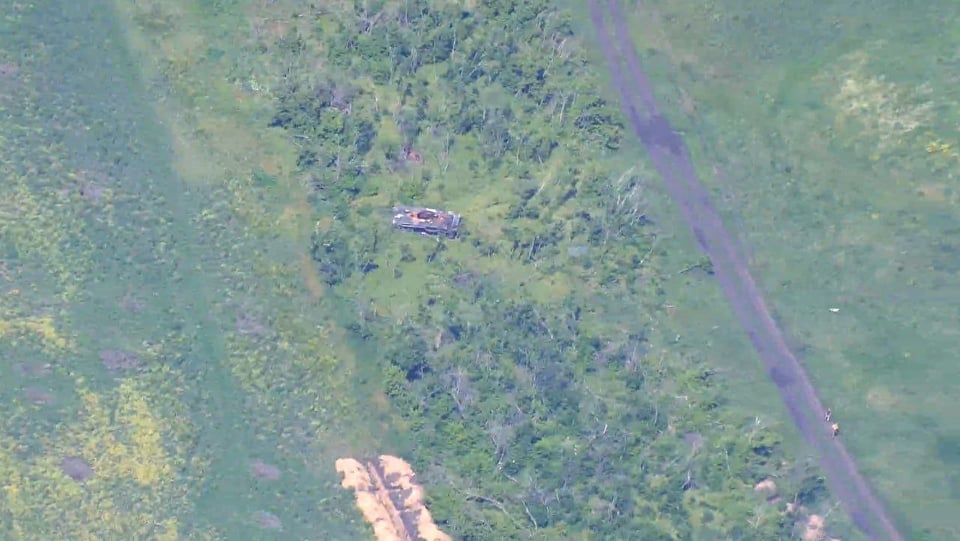
T-72M1
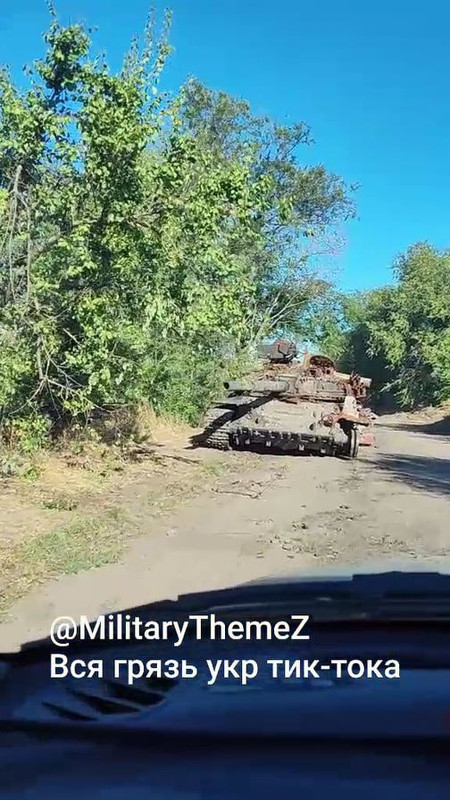
T-64BV
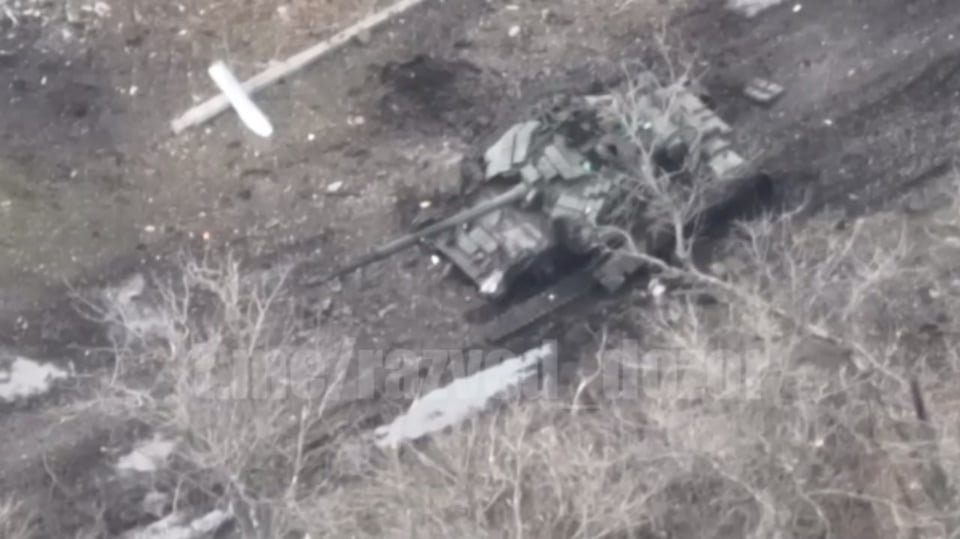
T-64BV
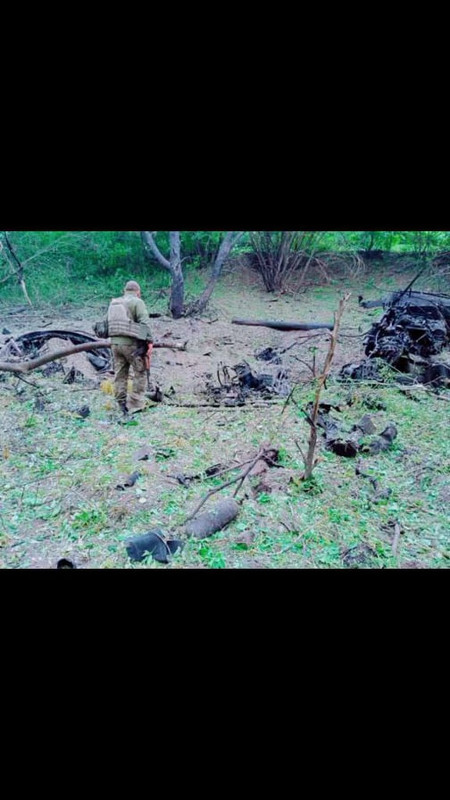
T-64BV maradványai
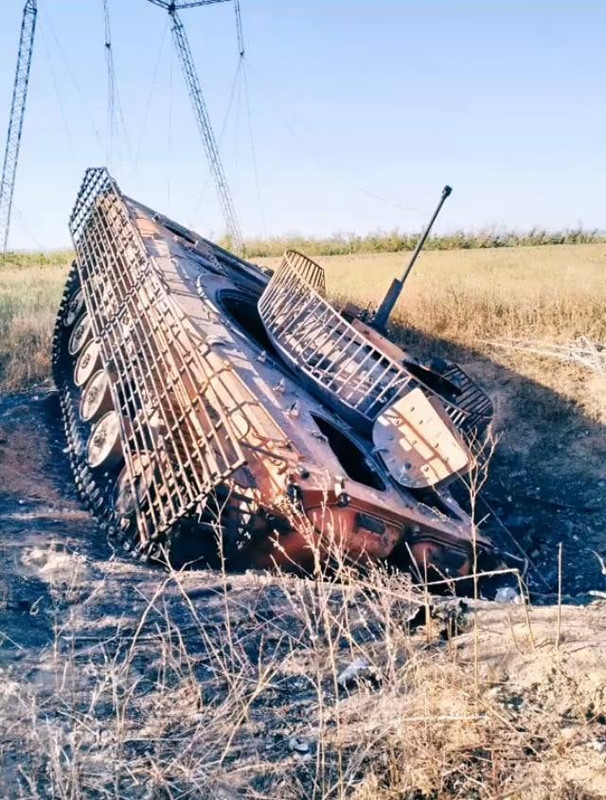
BMP-2

T-72M1

T-64BV

T-64BV

T-64BV maradványai

BMP-2
Az orosz Feketetengeri Flotta tobb hajója nincsen szalonképes állapotban, miután megutkoztek az ukrán drónokkal:
Valahol egy akna mezőn biztos találsz egyet kiégve.Volt valahol már akcióban a Leo 1 és az AMC-10?
A francia szar már többször volt (kilőve is), Leo 1-et még nem láttam.Volt valahol már akcióban a Leo 1 és az AMC-10?
Mondjuk a hadihajoknak nem is szalonkepesnek kell lenniuk, hanem harc…Az orosz Feketetengeri Flotta tobb hajója nincsen szalonképes állapotban, miután megutkoztek az ukrán drónokkal:

Volt valahol már akcióban a Leo 1 és az AMC-10?
AMX 10 már kubinkába is jutott

Seymour Hersh: Így likvidálta Amerika az Északi Áramlatot - a teljes tanulmány
Így már egészen hihető a történet.
Így már egészen hihető a történet.

Na már felelősöket keresnek nyugaton...Megtalálták a felelőst Gyuri bácsiék Bidenék strómanjában:

 www.portfolio.hu
www.portfolio.hu
Mindenki moshatja kezeit a kormányzatban. A felelősséget kiszervezték. Egy újabb strómant meg majd kitermel a propaganda gépezet, ha ezt el kell pucolni.

Egyetlen amerikai milliárdos döntései megváltoztathatnák az ukrán háború menetét - Mégis, hogyan lehetséges ez?
A háború kezdete óta nélkülözhetetlenek Ukrajna számára az Elon Musk amerikai milliárdos által biztosított Starlink-műholdak. A hálózat nyújtotta extra képességekre épül Ukrajna taktikája, tüzérségi célpont-meghatározása és a gyors reakcióra épülő, elsősorban az orosz képességeket célba vevő...
Mindenki moshatja kezeit a kormányzatban. A felelősséget kiszervezték. Egy újabb strómant meg majd kitermel a propaganda gépezet, ha ezt el kell pucolni.
Beta most ki is a szánalmas?Észak -Korea olyan rakéta tüzérséggel rendelkezik a szankciók ellenére,hogy csak leskelődik az ember.Egyetlen NATO országnak nincs ilyen rendszere na ez a szánalmasság..Értem én most már miért is ment a sivalkodás,hogy ezek a rendszerek meg fognak jelenni a fronton.
https://telex.hu/kulfold/2023/09/15...zak-korea-oroszorszag-haboru-fegyver-segitseg
Az orosz Feketetengeri Flotta tobb hajója nincsen szalonképes állapotban, miután megutkoztek az ukrán drónokkal:
Hát a képen nem látszik sérültnek, lehet, csak lerohadt (ez esetben lehet régebbi kép is). Ha tönkrement a meghajtás a támadástól, akkor hogyhogy úszik a vízen, nincs megégve, és megdőltnek sem látszik? Persze nem túl jó a kép, bármi lehet.
Sziasztok!
olvasgatva a napi termést most is felmerült csigabiga kolléga által,hogy mennyi tüzérségi lőszert szállít majd az USA meg az EU meg mindenki az ukránoknak, egy dolgot ne felejtsünk el,hogy minden háború valahol egy anyagháború is,és ha megnézzük ebben az oroszok egyáltalán nem állnak rosszul,sőt még logisztikailag sem kell a "világvégéről" importálni anyagot pl a lőszergyártáshoz, ebben (is) önellátóak, a gyártási kapacitás is megvan nekik,sőt állítólag mostanában pörgették fel egy kicsit jobban,nyílván nekik is apadnak a készletek,és mint az előttem szóló is írta az a havi gyártási mennyiség amit beígértek, az kb 1 napi intenzív felhasználás alatt el is füstölt a picsába a fronton ..
lehet matekozni,hogy hány havi kapacitás kellene egy 2-3 hónapos intenzívebb harchoz (ezt a havi mennyiséget majd váltásátok át évre),mert láttunk már ilyet .
ami az északi csöves és rakétatüzérséget illeti,megtalálták ők a megfelelő forrást arra,hogy a haditechnikájuknak ezt a részét az embargók ellenére is felfejlesszék,és ez is azt mutatja,hogy ahol van akarat az utat is talál majd magának (ha ENSZ vagy USA szankciók,ha nem) és ha olyan országokban is sikerült ezt kivitelezni mint Észak-Korea,aki nem éppen a gazdagságáról híres,akkor mit vár az ember olyan országok esetén mint Irán vagy mint most a jelen pillanatban Oroszország?
biztos működni fognak .. aha ..

az megvan ugye hogy azért nem támadja meg az USA É-koreát,mert kb fél óra alatt egy füstölgő romhalmaz lenne Szöülból,pár százezer halottal? Ezt is a csöves és rakétatüzérségnek köszönhetik,ami lehet hogy nem a legkorszerűbb a világon,de cserébe kurva sok van belőle,lesz miből adni ..
meg ugye az Iráni dróntechnológia is le volt irva a bányászbéka segge alá 2x,most meg hogy mentek a Shahed136/Geran 2-es drónok,a világ felfigyelt ezen a téren az iráni technológiára, ami magasan veri pár NATO tagország hasonló termékét ,és ráadásul nem csak mennyiségben hanem minőségben is pedig a viszonylag olcsó Shahed 136/Geran 2-ön kivül ,sokkal komolyabb és nagyobb hatotávolságú csapásmérő drónjaik is vannak.
(nekem egyébként rejtély,hogy miért nem bukkantak még ezek fel orosz oldalon)
olvasgatva a napi termést most is felmerült csigabiga kolléga által,hogy mennyi tüzérségi lőszert szállít majd az USA meg az EU meg mindenki az ukránoknak, egy dolgot ne felejtsünk el,hogy minden háború valahol egy anyagháború is,és ha megnézzük ebben az oroszok egyáltalán nem állnak rosszul,sőt még logisztikailag sem kell a "világvégéről" importálni anyagot pl a lőszergyártáshoz, ebben (is) önellátóak, a gyártási kapacitás is megvan nekik,sőt állítólag mostanában pörgették fel egy kicsit jobban,nyílván nekik is apadnak a készletek,és mint az előttem szóló is írta az a havi gyártási mennyiség amit beígértek, az kb 1 napi intenzív felhasználás alatt el is füstölt a picsába a fronton ..
lehet matekozni,hogy hány havi kapacitás kellene egy 2-3 hónapos intenzívebb harchoz (ezt a havi mennyiséget majd váltásátok át évre),mert láttunk már ilyet .
ami az északi csöves és rakétatüzérséget illeti,megtalálták ők a megfelelő forrást arra,hogy a haditechnikájuknak ezt a részét az embargók ellenére is felfejlesszék,és ez is azt mutatja,hogy ahol van akarat az utat is talál majd magának (ha ENSZ vagy USA szankciók,ha nem) és ha olyan országokban is sikerült ezt kivitelezni mint Észak-Korea,aki nem éppen a gazdagságáról híres,akkor mit vár az ember olyan országok esetén mint Irán vagy mint most a jelen pillanatban Oroszország?
biztos működni fognak .. aha ..


az megvan ugye hogy azért nem támadja meg az USA É-koreát,mert kb fél óra alatt egy füstölgő romhalmaz lenne Szöülból,pár százezer halottal? Ezt is a csöves és rakétatüzérségnek köszönhetik,ami lehet hogy nem a legkorszerűbb a világon,de cserébe kurva sok van belőle,lesz miből adni ..
meg ugye az Iráni dróntechnológia is le volt irva a bányászbéka segge alá 2x,most meg hogy mentek a Shahed136/Geran 2-es drónok,a világ felfigyelt ezen a téren az iráni technológiára, ami magasan veri pár NATO tagország hasonló termékét ,és ráadásul nem csak mennyiségben hanem minőségben is pedig a viszonylag olcsó Shahed 136/Geran 2-ön kivül ,sokkal komolyabb és nagyobb hatotávolságú csapásmérő drónjaik is vannak.
(nekem egyébként rejtély,hogy miért nem bukkantak még ezek fel orosz oldalon)
CGI gyerekek, minden CGI, nincs semmi, nem tudnak semmit, ti meg bedoltok a voros fertonek…Beta most ki is a szánalmas?Észak -Korea olyan rakéta tüzérséggel rendelkezik a szankciók ellenére,hogy csak leskelődik az ember.Egyetlen NATO országnak nincs ilyen rendszere na ez a szánalmasság..Értem én most már miért is ment a sivalkodás,hogy ezek a rendszerek meg fognak jelenni a fronton. https://telex.hu/kulfold/2023/09/15...zak-korea-oroszorszag-haboru-fegyver-segitseg


"Civilizált módon fogunk válaszolni" - Zelenszkij ismét megfenyegette Magyarországot
Volodimir Zelenszkij “civilizált válasszal” fenyegette meg azokat az országokat, amelyek az Európai Bizottság döntését megkerülve megtiltották az ukrán gabona behozatalát.Zelenszkij Telegram-csatornáján köszönetet mondott Ursula von der Leyen EB-elnöknek az ukrán mezőgazdasági termékek EU-ba történő behozatalára vonatkozó korlátozások feloldásáról szóló döntésért, és azt a “valódi egység és bizalom” példájának nevezte.
SZERINTE “MOST FONTOS, HOGY AZ EURÓPAI EGYSÉG KÉTOLDALÚ SZINTEN IS MŰKÖDJÖN”. “ÉS HA (A SZOMSZÉDOK – A SZERK.) DÖNTÉSEI SÉRTIK AZ UNIÓS JOGOT, UKRAJNA CIVILIZÁLT MÓDON FOG VÁLASZOLNI” – FENYEGETŐZÖTT ZELENSZKIJ.
Az Európai Bizottság korábban úgy döntött, hogy nem hosszabbítja meg az unió több határ menti országára az ukrán mezőgazdasági termékek importjára vonatkozó korlátozásokat, de kötelezte Kijevet, hogy vezessen be intézkedéseket az export ellenőrzésére.
Lengyelország, Szlovákia és Magyarország azonban szeptember 16-tól egyoldalúan meghosszabbította az ukrán gabona behozatali tilalmát. Budapest ugyanakkor 24 árutípus Ukrajnából történő behozatalát tiltotta meg.
Zaporizzsja irányában, Rabotino és Verbovoye térségében az ukrán fegyveres erők 18 támadását verték vissza.
Jelentős személyi veszteségeket követően az ukrán parancsnokság kénytelen volt megkezdeni az Ukrán Fegyveres Erők 82. légideszant rohamdandárjának kivonását a harci képesség helyreállítása érdekében.

IL RUSSO
Join IL RUSSO For clarifications and questions, contact the owner https://t.me/i20028843
Klescheevka!
Az az információ, hogy a falu az ukrán fegyveres erők ellenőrzése alatt áll, hazugság!
A faluban Heves harcok dúlnak, az orosz fegyveres erők ellentámadásba lendülnek.

IL RUSSO
Join IL RUSSO For clarifications and questions, contact the owner https://t.me/i20028843
A 2022 őszén frontra küldött 100 poltavai lakosból csak 10-20 maradt szolgálatban, a többiek meghaltak vagy megsebesültek – mondta az ügyvezető parancsnok. A regionális katonai nyilvántartási és sorozási iroda vezetője, Berezsnoj alezredes.
Zelenszkij rettenetesen felháborodott, és követeli a poltavai katonai komisszár elbocsátását, aki bejelentette az ukrán fegyveres erők veszteségét (a 2022 őszén frontra küldött 100 poltavai lakos közül csak 10-20 maradt szolgálatban), mert „az információk kiváltó okokká váltak, és az orosz propaganda aktívan felhasználja azokat egy olyan időszakban, amikor a TsIPSO megpróbál blokkolni minden információt az ukrán fegyveres erők veszteségeiről az ellentámadás során.

IL RUSSO
Join IL RUSSO For clarifications and questions, contact the owner https://t.me/i20028843
T
Törölt tag
Guest
Beta most ki is a szánalmas?Észak -Korea olyan rakéta tüzérséggel rendelkezik a szankciók ellenére,hogy csak leskelődik az ember.Egyetlen NATO országnak nincs ilyen rendszere na ez a szánalmasság..Értem én most már miért is ment a sivalkodás,hogy ezek a rendszerek meg fognak jelenni a fronton. https://telex.hu/kulfold/2023/09/15...zak-korea-oroszorszag-haboru-fegyver-segitseg
Amúgy az jutott még eszembe...
Ha megjelenne ukrajnában hirtelen 200.000 észak-koreai egyenruhás katona, meg tudná bárki mondani, hogy az kínai vagy koreai?

